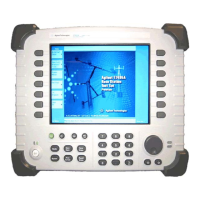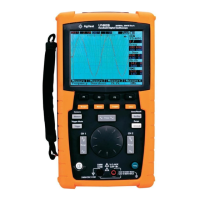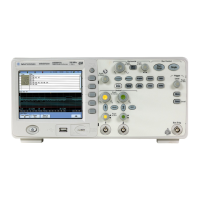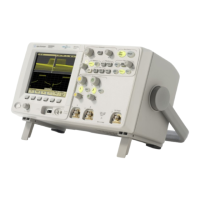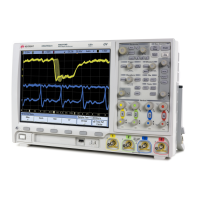Using Load Cards and Loads 5
E6198B Switch/Load Unit User Manual 5-65
Selecting a Power Supply Configuration
Each channel connects to the power bus via a Form C SPDT
(single pole, double throw) relay. This relay has a NO
(normally-open) and a NC (normally-closed) terminal. Each NO
terminal is connected to a pin on J4-J7, and each NC terminal is
connected to a pin on J8-J11. Each pin on J4-J11 can be
connected to any of the four power bus lines on J12 via jumper
wires. See Figure 5-43.
The terminal block jumper lets you conveniently connect
pull-up or pull-down voltages to the various inputs. You can also
terminate a UUT load at a different voltage than ground. For
example, you can connect the channel to +12 volts on one side,
and +5 volts on the other.
The factory default is to provide two jumper combs, one that
ties all the pins on J4-J7 (NO) together and one that ties all the
pins on J8-J11 (NC) together. The NO pins are jumpered to
power bus 2, and the NC pins are jumpered to power bus 1. The
jumper combs for J4-Jll can be easily cut to provide bus or pin
isolation between the various input/power bus connections.
Selecting a Current-Sense Resistor Value
The card comes factory loaded with a three watt, 0.05Ω, 0.1%
sense resistor already installed. If lower value currents are
being measured, requiring a larger resistance value to make the
sense voltage readable, then replace the sense resistor with a
four-wire resistor of higher value. The N9377A provides a
footprint for another current sense element so that you can
replace the factory provided resistor with one selected for your
specific UUT.
Selecting a Load Fuse
The load fuses used are IEC 5x20 millimeter, 5-amp slow-blow.
These fuses may be replaced by fuses with a higher value, but
not to exceed 8 amps.
Be sure to size the power dissipation of the sense resistor large
enough to handle the expected current of the load.
The maximum fuse rating must not exceed an I
2
T value of 102-126.
*
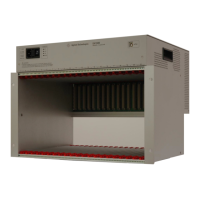
